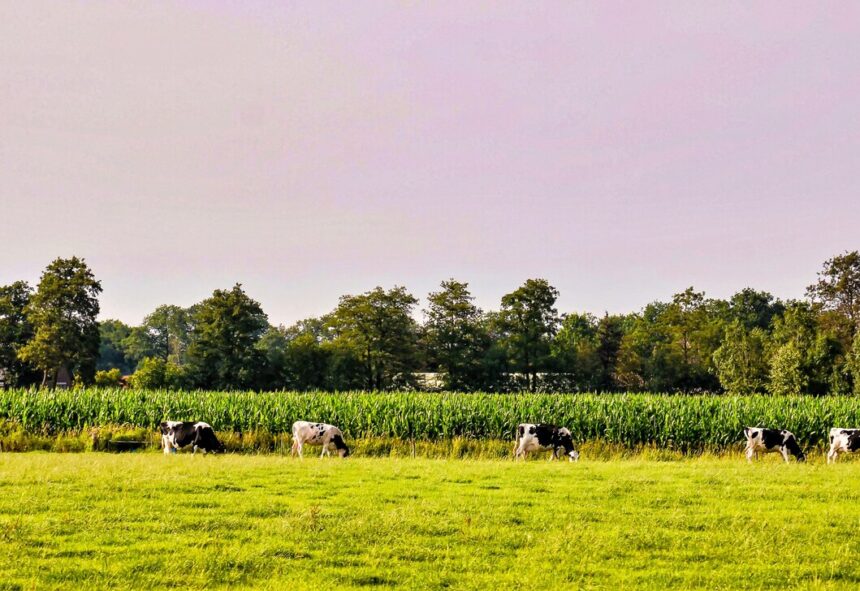Biodiversity on farms is crucial for maintaining healthy ecosystems, ensuring sustainable production, and enhancing resilience to climate change. A diverse farm environment, which includes a variety of plants, animals, and microorganisms, not only supports food production but also contributes to soil fertility, pest control, and overall ecological balance. Here are some effective ways to manage and improve farm biodiversity:
1. Diversify Crops and Livestock
One of the most effective ways to increase biodiversity on farms is to grow a variety of crops and integrate livestock. Mono-cropping, or the practice of growing a single crop year after year, can deplete soil nutrients and reduce ecological resilience. By planting multiple crop varieties, farmers can enhance the diversity of plants and create a more stable ecosystem. Similarly, incorporating livestock can contribute to nutrient cycling and improve soil health.
2. Incorporate Native Plants and Hedgerows
Introducing native plants and establishing hedgerows around the farm can create wildlife corridors that attract beneficial insects, birds, and other wildlife. Native plants are better adapted to the local environment and provide essential food sources and habitats for wildlife. Hedgerows, consisting of trees, shrubs, and ground plants, also act as windbreaks, reduce soil erosion, and protect water quality.
3. Implement Crop Rotation and Polyculture
Crop rotation involves changing the types of crops grown in a specific field each season. This practice prevents the depletion of specific nutrients in the soil, reduces pest and disease buildup, and encourages a broader range of soil organisms. Polyculture, the practice of growing multiple crops in the same area, increases genetic and species diversity. Together, these methods reduce the dependency on chemical inputs like pesticides and fertilizers and promote a healthier farm ecosystem.
4. Use Sustainable Pest Management
Instead of relying on chemical pesticides, sustainable pest management techniques can help maintain biodiversity. Integrated pest management (IPM) encourages the use of natural predators, such as beneficial insects, to control pests. Creating habitats for these predators, such as planting flower strips or leaving areas of the farm uncultivated, can help maintain a balanced ecosystem where pests are controlled without harming other species.
5. Preserve and Enhance Soil Health
Healthy soil is vital for farm biodiversity as it supports the organisms that sustain plant life. To improve soil health, farmers can incorporate organic farming practices, such as using compost, mulching, and reducing the use of synthetic chemicals. Practices like no-till farming and agroforestry can also help enhance soil structure and promote the growth of diverse microorganisms.
6. Create Wetlands and Water Features
Wetlands, ponds, and other water features can increase biodiversity by providing habitats for amphibians, insects, and aquatic plants. These areas also help in water filtration, reduce runoff, and mitigate the effects of flooding. Integrating water features on farms can attract a variety of species and support a thriving ecosystem.
7. Promote Pollinator Habitats
Pollinators, such as bees, butterflies, and birds, play a crucial role in farm biodiversity. To attract and support pollinators, farmers can plant wildflowers, establish bee habitats, and avoid using pesticides that harm these vital creatures. Providing a range of flowering plants that bloom throughout the growing season ensures that pollinators have access to food year-round.
8. Conserve Natural Areas
Maintaining natural areas, such as forests, wetlands, and grasslands, on or around the farm is essential for conserving local biodiversity. These areas provide habitats for wildlife, promote water retention, and help regulate the local climate. Protecting natural ecosystems on the farm supports biodiversity and allows wildlife to thrive.
9. Monitor and Evaluate Biodiversity
Regular monitoring of biodiversity on the farm helps to track changes in species abundance and identify potential threats. Farmers can use tools like species inventories or biodiversity indices to measure the success of their biodiversity management strategies. By evaluating these results, they can make adjustments to their farming practices and ensure that biodiversity is being supported effectively.
10. Educate and Engage the Community
Farmers can enhance biodiversity by educating themselves and their communities about the importance of biodiversity in agricultural practices. Engaging with local conservation groups, researchers, and agricultural extension services can provide valuable insights and support in implementing biodiversity-friendly practices.
Managing and improving biodiversity on farms is not only beneficial for the environment but also for farm productivity and long-term sustainability. By diversifying crops, protecting natural habitats, and adopting sustainable practices, farmers can create a thriving ecosystem that supports both agriculture and wildlife. With careful planning and dedication, biodiversity can be enhanced, ensuring that farms remain resilient, productive, and environmentally responsible for generations to come.







